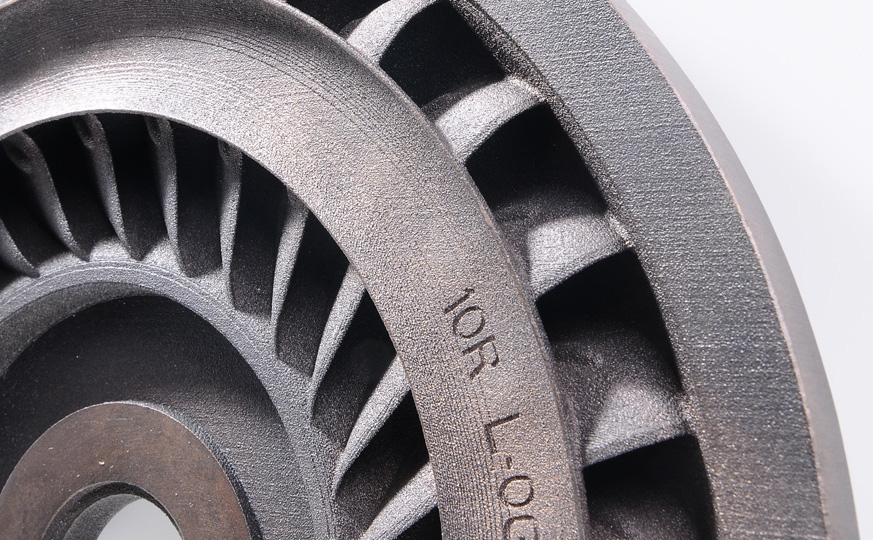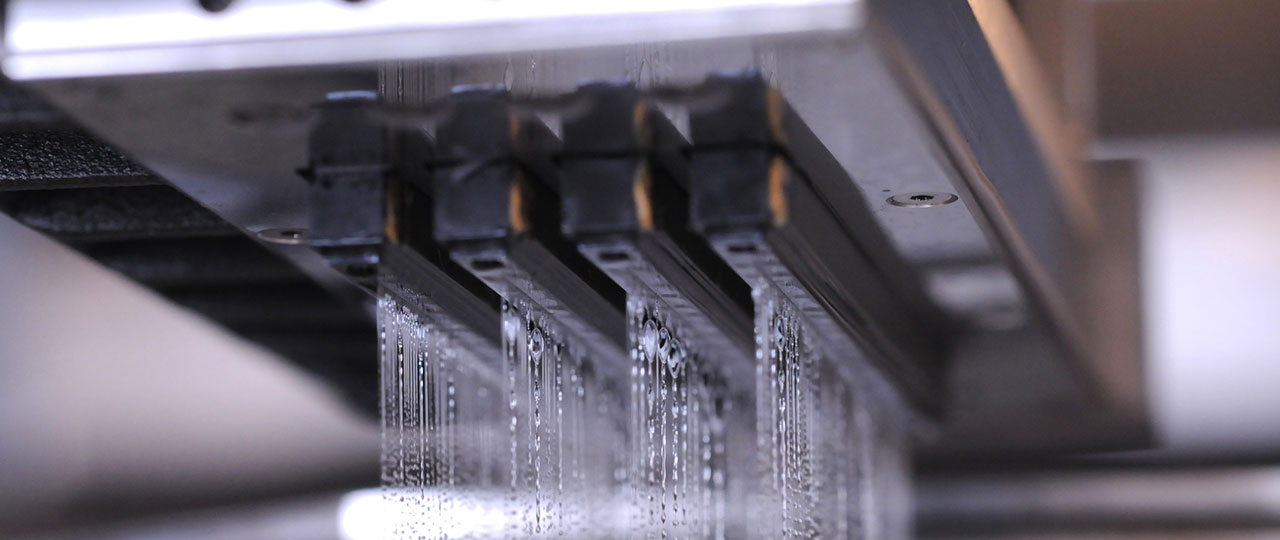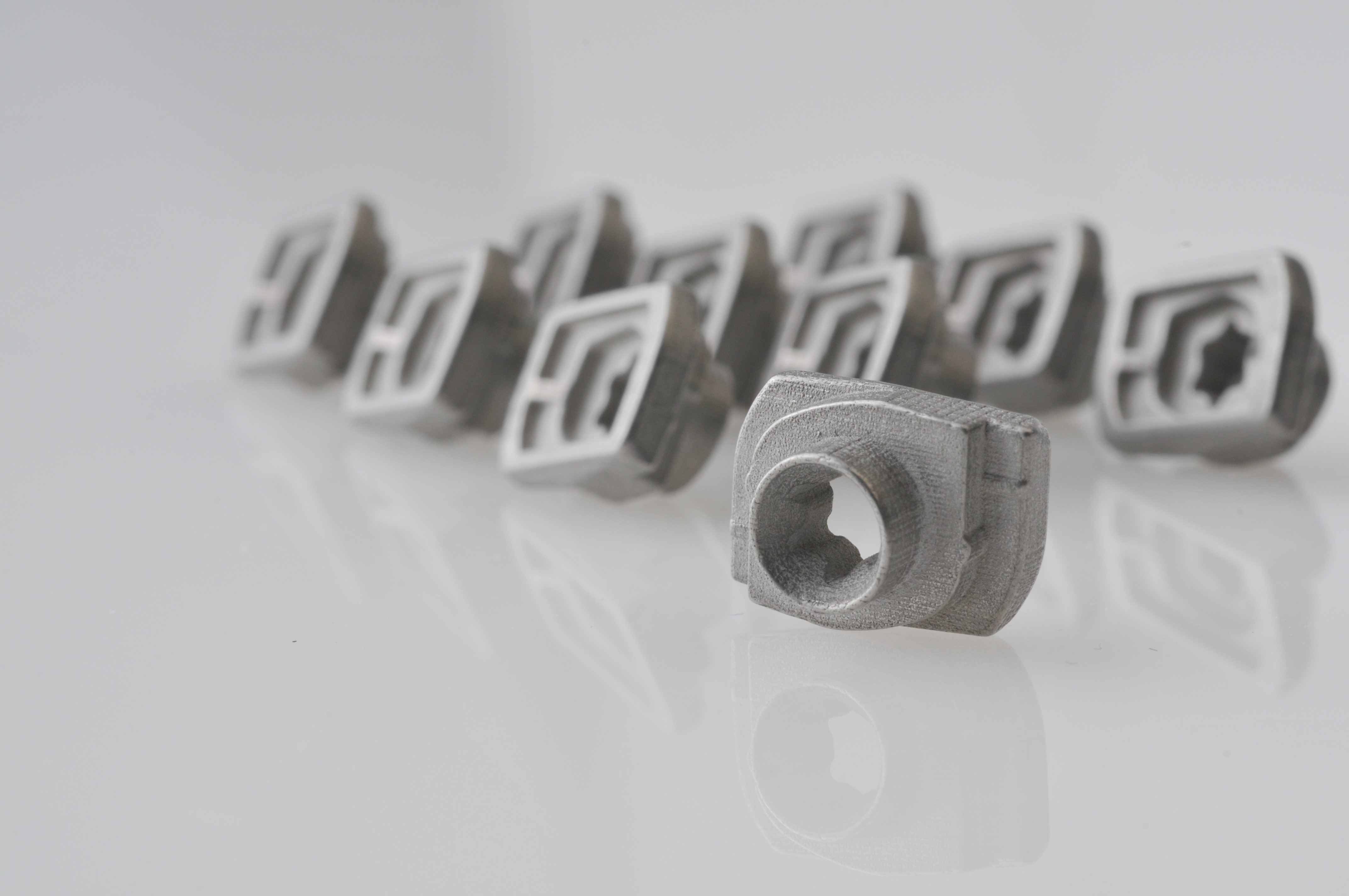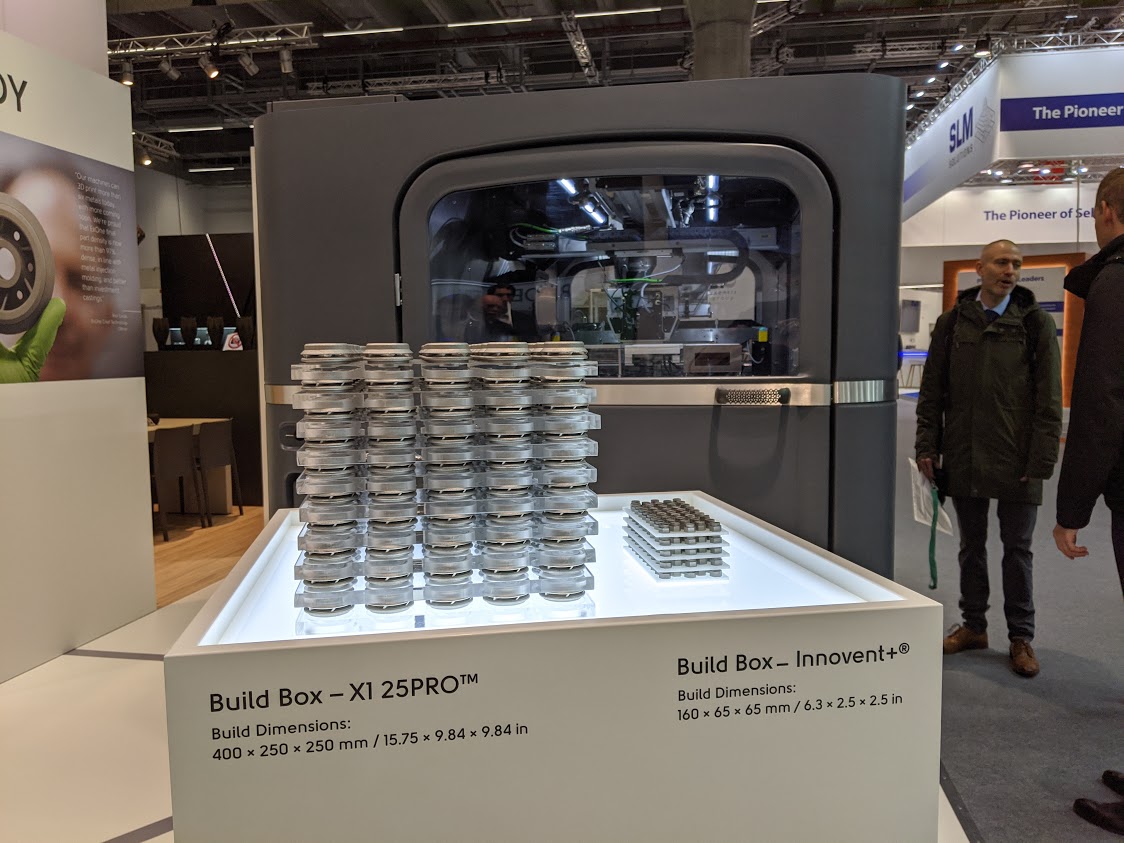Leading binder jet 3D printer manufacturer ExOne has announced two partnerships during Formnext 2019 aimed at developing the sintering stage of its metal binder jet 3D printing process.
The company is collaborating with engineering simulation company ANSYS to develop software for predicting the sintering behavior of metal parts 3D printed via binder jetting. ExOne has also expanded its partnerships with U.S.-based debind and sinter processing experts Elnik Systems and DSH Technologies, to improve the standardization of metal sintering for binder jetted parts. “ExOne metal 3D printers already deliver industry-leading density and repeatability,” comments John Hartner, ExOne CEO.
“Now we’re working to ensure that the final sintering step is as easy as possible for our customers — a seamless end-to-end process that delivers a quality result.”

Sintering in the binder jet 3D printing process
Sintering is a significant step within the metal binder jetting 3D printing process. The technology uses a digital file to inkjet a binder into a bed of powder that can be either metal, sand or ceramic. Making the particles stick together, the inkjetted binder helps to create a solid part one layer at a time. With metal, however, an additional step is required for sintering the final part, in order to fuse the particles together into a solid object.
Sintering is a common manufacturing process, however, ExOne has identified that when applied to the design freedom of 3D printing, new challenges arise. Sintering a “green” metal part (before debinding and sintering) manufactured through binder jetting 3D printing often involves trial and error in order to deliver predictable dimensional tolerances and other properties. As such, ExOne’s partnerships with ANSYS, Elnik, and DSH aims to better predict and simplify the sintering process.
Recently, ExOne had made significant efforts towards developing its binder jet 3D printing technology. The company is collaborating with the likes of Sandvik and ORNL to further advance the binder jetting process for metal parts.

Simplifying the sintering step
ExOne’s metal 3D printers, which include the Innovent+, X1 25PRO, M-Flex, and the recently released X1 160PRO, are compatible with six qualified metal powders, including 316L, 304L, and 17-4PH. The qualification process for metals requires repeatable, desirable performance in sintering, as well as 3D printing.
In its expanded collaboration with Elnik and DSH, ExOne is seeking to standardize and improve sintering profiles for metal parts 3D printed on its binder jetting systems. Elnik is a manufacturer of batch debinding and sintering equipment. An affiliate of Elnik, DSH provides metallurgical assistance and turnkey production services.
The profiles will be based on metal type, as well as part features and geometric elements. All three firms are also co-developing an interface for selecting automatic loading of the different sintering profiles. This will help to simplify the sintering process.
“We are honored to be collaborating with the experienced ExOne team on technology enhancements for metal binder jetting technology,” commented Stefan Joens, Elnik President/DSH Vice President.

Furthermore, ExOne and ANSYS are developing predictive software to help streamline the design process of metal parts for binder jetting, which includes the final sintering stage. A software developer, ANSYS specializes in Computer-Aided Engineering (CAE), with a variety of programs developed specifically for additive manufacturing within its portfolio.
The simulation software will enable users to predict how parts will behave as they are being sintered, allowing adjustments to be made or automated to help achieve the desired metal part. Outside of metal binder jetting, the software can also be used to refine ExOne’s patented process of 3D printing sintering setters in alumina. Setters are used during sintering to support some geometric features during the sintering process.
A beta version of the software, for 316L stainless steel, is targeted for release in the first quarter of 2020, with modeling software for other materials expected to follow. “While ExOne customers successfully sinter parts today, the process often involves some trial and error with sacrificial parts. We are confident that new simulation software will greatly simplify this process and ease the adoption of our sustainable manufacturing process,” adds Hartner.
Visit ExOne’s stand at Formnext 2019 in Hall 12.0, Booth C21, where the company is showcasing the production version of its X1 25PRO 3D printer. Elnik can also be found in Hall 12.0, at Booth B69, whereas ANSYS is exhibiting from Hall 11.0, Booth F39.

Subscribe to the 3D Printing Industry newsletter for the latest news in additive manufacturing from Formnext. You can also stay connected by following us on Twitter and liking us on Facebook.
Looking for a career in additive manufacturing? Visit 3D Printing Jobs for a selection of roles in the industry.
Featured image shows 3D printed metal engine blocks. Photo via ExOne.


